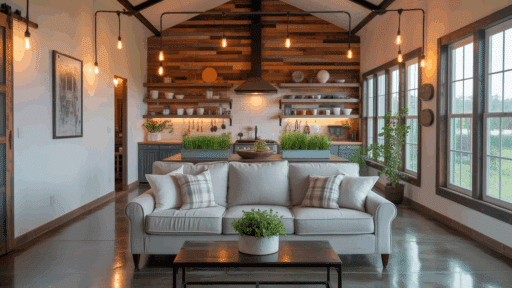Architects are trained to solve problems. Architect problem solving and architectural thinking go hand in hand. Architects work from real-world needs, not just aesthetics. They balance client goals, technical rules, and site realities. Their designs respond to practical constraints and user needs. Solution-focused design means every decision ties back to how a building will be used, how it fits into place, and how it supports life. It builds trust, because readers see architects deliver real results, not just pretty images. Today’s architecture demands both beauty and function. Understanding that balance boosts authoritativeness. Readers know architects are skilled problems solvers. They expect insight and clarity. So we start with this mindset: architects think first in solutions, and only second in style.
The Architect’s Role as a Problem Solver
An architect acts as an expert architect problem solver. They listen to users. They study context. Then they shape designs that meet real needs. Look at projects where architects transformed small or awkward spaces into comfortable, functional homes. That is a design challenge, solved through thoughtful planning. They attend planning meetings, examine building codes, and guide budgets, all with one goal: solving problems before they appear. As an experienced Architecture in London, dRaw Architecture has delivered projects where potential issues were identified early, such as awkward room layouts or costly materials, and resolved before construction began. This clear, fact-based approach educates readers and builds trust in the architect’s ability.
Understanding the Problem Before Designing
Architects follow a clear architectural design process. They begin by defining the real problem, beyond surface desires. Jumping to style too soon leads to weak solutions. Instead, they gather data through site analysis and user needs analysis. They examine climate, context, demographics, and lifestyle patterns. For a community centre in London, designers surveyed families, seniors, and staff. That process shaped accessible layouts, natural lighting, and meeting rooms that fit actual routines. Early understanding ensures architecture responds to real needs, not assumptions. Successful architects keep questioning, refining, and aligning design vision with user-centred fact.
Balancing Functionality, Aesthetics, and Budget
Architects know that functional architecture and design aesthetics must be balanced. A pleasing shape means little if rooms are cramped or expensive. They review layouts, structure, materials, and construction cost together. For example, a museum project used modular concrete elements to cut costs while offering dramatic lightplay inside. That union of beauty, purpose, and economy demonstrates cost-effective design solutions without quality trade-offs. Architects iterate designs that meet safety, comfort, and budget needs. This balance becomes the core of solution-focused practice, where elegance serves purpose, not style alone.
Working Within Constraints to Innovate
Design constraints do more than limit, they inspire innovation. Architects face zoning laws, site limits, and technical challenges. Rather than yield, they adapt creatively. On a narrow urban plot, one firm designed a tall, slender library that folds inward to expand usable space. Restrictions spurred a compact, elegant form. This kind of architectural innovation shows how design constraints become tools. Constraints force architects to refine thinking: to prioritise structure, light, and flow in new ways. When used well, limits lead to more robust, imaginative solutions than unconstrained design could offer.
The Human-Centered Approach in Architecture
Human-centered design means creating spaces that work and feel right for people. Architects consider comfort, safety, and accessibility. They observe how people move, rest, and interact. Cultural context matters too: a public square in Edinburgh reflected local habits of gathering, walking, and celebration. Designers added seating zones, shade, and flexible stages for performances. Architectural psychology guides those choices. This approach ensures buildings serve real users and communities. It shifts architecture from object to experience. Human-centred design makes places intuitive, welcoming, and meaningful, not just visually striking.
Sustainability as a Problem-Solving Mindset
Sustainable architecture is not a trend, it’s problem solving. Architects integrate eco-friendly materials and energy-efficient designs to address climate change and resource limits. In Stockholm, a residential block uses solar facades, rainwater harvesting, and passive heating. The result: lower energy bills, reduced emissions, and healthier indoor air. Such green building design works smarter. Architects approach sustainability as essential utility, not optional style. Each choice, from orientation to insulation, solves environmental issues. Sustainability becomes embedded in design thinking, shaping logic and structure of the building.
The Role of Technology in Modern Architecture
Architecture technology helps architects tackle complexity faster. Tools like BIM, VR, and AI streamline design, simulation, and coordination. For instance, VR models let clients “walk” early in design, revealing layout flaws before construction begins. AI can suggest material choices or optimise energy use. Yet the human mind leads. AI in architecture assists ideation, not replaces judgment. The architect still defines context, ethics, and meaning. Technology amplifies design, making architects more effective. It speeds tasks and surfaces insights, but creative and ethical decisions remain firmly human.
Collaboration as a Design Strength
Architectural collaboration strengthens every project. Teams of engineers, planners, and clients bring varied expertise. In a school project, structural engineers contributed roof systems that shaped the layout, while teachers informed flow and classroom relationships. Through design teamwork, architects refine functional, safe, and inspiring solutions. Collaboration builds trust and shared vision. It avoids silos and miscommunication. Architects coordinate, synthesise, and guide. When they lead with shared purpose, solutions grow better, smarter, and more enduring than solo style can deliver.
Learning from History to Solve Modern Problems
Architects draw lessons from architectural history to address modern issues. Classic examples show effective natural lighting, passive cooling, and material use. In hot climates, traditional mashrabiya screens inform modern shading systems. That timeless design principle solves current climate challenges. Studying the past avoids repeating mistakes, like over-insulated but dark buildings. History teaches proportion, rhythm, and adaptation across time. Architects use that wisdom to shape contemporary solutions that fit culture, climate, and technology. History becomes a guide, not a copy, an anchor for innovation.
Emotional and Psychological Impact of Architecture
Architecture influences mood and behaviour. Emotional architecture uses light, texture, and scale to build connection. A healing hospital wing with soft daylight, warm colours, and clear wayfinding calms patients and families. That emotional resonance supports recovery. Architects who understand architectural psychology craft spaces that feel secure, uplifting, or focused, depending on purpose. Textures, heights, and transitions all shape how people feel. Emotion becomes part of function. Spaces designed with feeling help users thrive. That makes architecture more than style, it becomes a lived experience.
Will AI Replace Architects in Problem Solving?
AI in design offers tools but not autonomy. It can generate layouts or optimise energy, but cannot choose purpose, ethics, or cultural fit. Human creativity and empathy remain vital. AI remains an assistant. It picks options, predicts outcomes, and suggests efficiencies, but it lacks intent. Architects shape vision, values, and meaning. The future of architecture blends AI with human insight. Architects remain essential problem solvers. AI in design becomes a partner in thought, not a creator of soul.
Conclusion – The Architect’s Mindset for Lasting Solutions
Architectural thinking places solutions above style. Architects define real challenges, weigh constraints, and design for people, planet, and purpose. Their work balances aesthetics, function, cost, and emotion. They use technology, history, and teamwork for better outcomes. That mindset builds meaning and durability, not just snapshots of beauty. When solutions guide design, architecture becomes relevant, trusted, and enduring. That is why architects think in solutions, not just styles.








